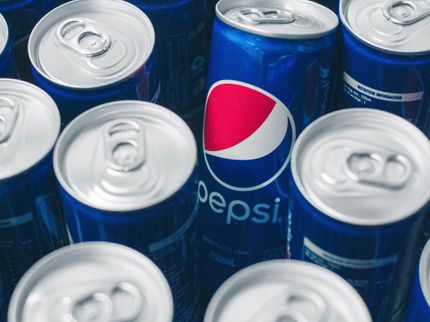Globally, consumption of sugary drinks increased at least 16% since 1990
Dietary survey data shows differences based on region and age, say researchers at Friedman School of Nutrition Science and Policy at Tufts University
The decision to reach for a sugary beverage is heavily influenced by where you live, Friedman School of Nutrition science and Policy researchers report in a new study published October 3 in the journal Nature Communications. While an analysis of the Global Dietary Database for the years 1990, 2005, and 2018 found overall consumption of sweetened drinks increased—by nearly 16% worldwide over the 28-year period studied—regional intake widely varied.
Sugary drinks are a public health concern because they have been widely associated with obesity and cardiometabolic diseases, which are among the leading causes of death and years lost to disability globally. Many national guidelines recommend limiting added sugars to less than 5 to 10% of daily calories, and because sodas add no nutritional value, some countries tax their consumption to help their residents meet this goal.
The study is the latest snapshot of how adults in 185 countries imbibe sugar-sweetened beverages, specifically: soft drinks, energy drinks, fruit juices, punch, lemonade, and aguas frescas that contain over 50 calories per serving (8 ounces). Intakes varied widely by world region. For instance, in 2018, the average person consumed 2.7 servings of sugary drinks per week, but this ranged from 0.7 servings per week in South Asia to 7.8 servings per week in Latin America and the Caribbean.
Global intakes were observed to be higher in males versus females and in younger versus older people, but the role of education and rural/urban residency was influenced more by region of origin. Consumption of sugar-sweetened beverages were more likely among adults with higher versus lower education in Sub-Saharan Africa, South Asia, and Latin America/Caribbean, while the opposite was seen in Middle East/North Africa. Overall, some of the highest sugary drink intakes in the world were among urban, highly educated adults in Sub-Saharan Africa (12.4 servings per week) and in Latin America/the Caribbean (8.5 servings per week).
At the national level, the countries where people consumed the highest number of sugary drink servings per week included Mexico (8.9), Ethiopia (7.1), the United States (4.9), and Nigeria (4.9), compared to India, China, and Bangladesh (0.2 each).
“We were struck by the wide variations by world regions in 2018; that Latin America/Caribbean had the largest intakes at all time points despite an overall decrease overtime; and that Sub-Saharan Africa had the greatest increases across all time points,” says first author Laura Lara-Castor, a PhD candidate in the Nutrition Epidemiology and Data Science program at the Friedman School. “These results suggest that more work is needed, especially around successful interventions such as marketing regulations, food labeling, and soda taxes.”
Information from the Global Dietary Database—which aggregates hundreds of survey results about what people eat and drink—also revealed a relationship between sugary beverages and socio-economic status. Between 1990 and 2018, the largest increase in consumption was in Sub-Saharan Africa (+2.99; +81.9%). Intakes rose then fell in high-income countries, and decreased then increased in Latin America/Caribbean, both returning close to 1990 levels by 2018. Other world regions had more modest, steady increases over time. Similar patterns were observed by sex, age, education, and area of residence.
While the study did not identify the reasons for these trends, the researchers hypothesize the changes could be related to the effectiveness of targeted marketing tactics from the soda and food industry, the association of Western diets with high status, as well as access to water. “Soda can reach the farthest places, and in countries where clean water is less accessible, these beverages might be the only thing available to drink at times,” says Lara-Castor.
“Sugar-sweetened beverage intake has increased in the past few decades despite efforts to decrease their appeal,” says Dariush Mozaffarian, a cardiologist and Jean Mayer Professor of Nutrition at the Friedman School. “Some populations are especially vulnerable, and our findings provide evidence to inform the need and design of national and more targeted policies to reduce their intake worldwide.”
The researchers say more work is needed to assess sugary drink intake in children and adolescents, to measure the impact of soda taxes globally, and to better understand differences across each country’s subpopulations. The team also wants to explore how other sweet beverages, such as milk, coffees and teas, factor into consumption habits.
Research reported in this article was supported by the Gates Foundation, the American Heart Association, and the National Council for Science and Technology in Mexico. Complete information on authors, funders, methodology, and conflicts of interest is available in the published paper.
The content is solely the responsibility of the authors and does not necessarily represent the official views of the funders.






























































